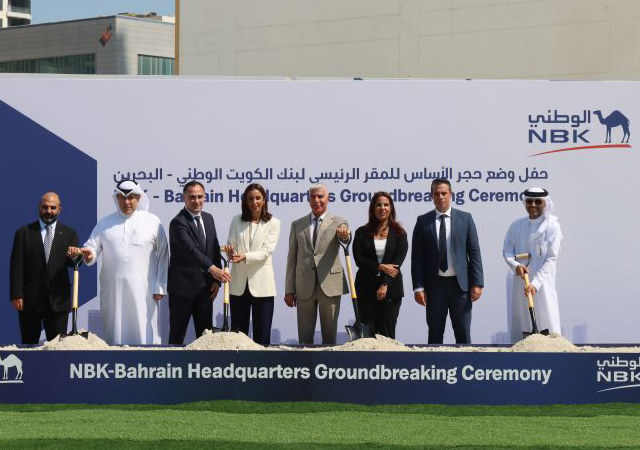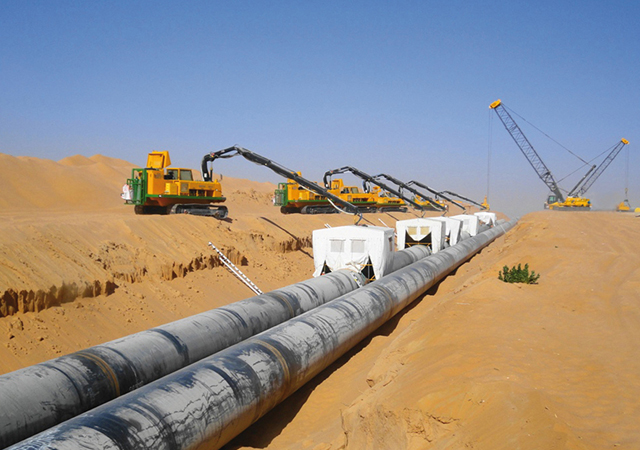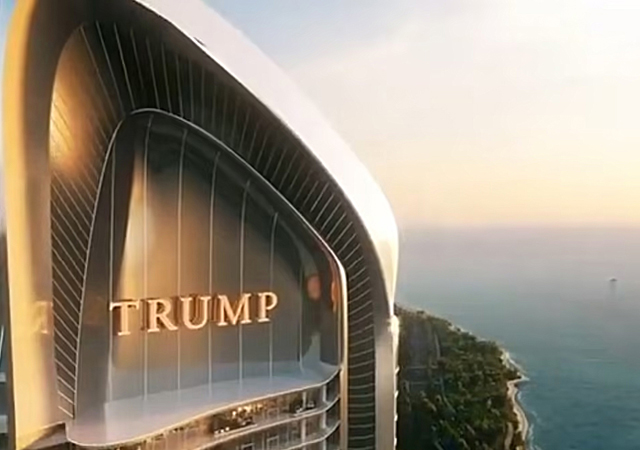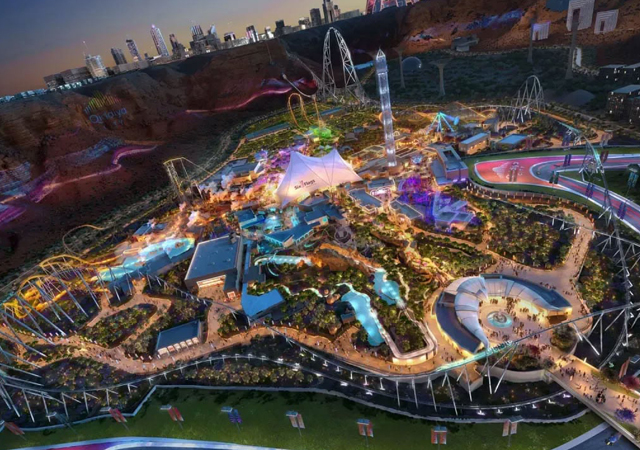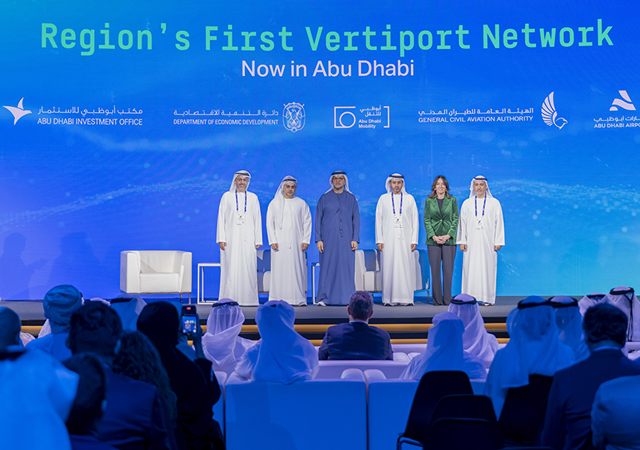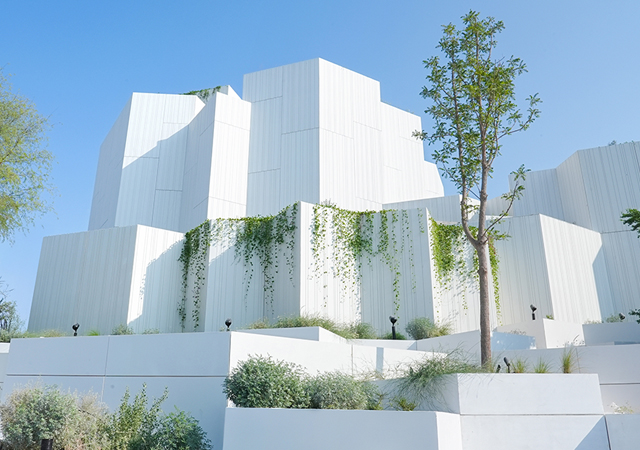
 Madinat Jumeirah ... a unique Arabian experience.
Madinat Jumeirah ... a unique Arabian experience.
It’s almost surreal. An ancient Arabian city, rising up close to the sea in the UAE, with sandy palaces, wind-towers by the hundreds and traditional markets, a city with Venetian-styled canals and bridges, where small Arabian boats replace the traditional gondola to ferry visitors from one place to the other.
Yet, an oasis that offers the best of modern living, where one can wine and dine in total luxury, host a prestigious conference, throw a lavish banquet, and listen to the world’s best entertainers on stage, indoors or outdoors.
Yes, there is nothing mythical about this stunning resort, called the Madinat Jumeirah, that stretches over a kilometre of private beach in Dubai.
The resort opened its doors last September when one of its two hotels, the Mina A’ Salam, was launched (under the first phase of development), to welcome delegates attending the annual summit of the World Bank and International Monetary Fund (IMF), which was held for the first time in Dubai.
And now, the resort’s piece de resistance – an eight-storey five-star-plus property rising out of its own ‘island’ – is set to open shortly, as phases II and III near completion, says the project’s developer, Mirage Mille Leisure and Development Company.
Madinat Jumeirah is designed to reflect old Arabia in total modern day luxury, and because of this, a tremendous amount of design and contracting expertise, as well as perfect planning of construction sequences, was needed.
“The concept was first sketched by Creative Kingdom in detail just on a single A4 sheet of paper which was then blown up to A0,” recalls Paolo Lupini, a project manager. “Meandering waterways, wide, open seascapes, 270 wind-towers, sand-coloured buildings and a castle are distinctive features of this Old Arabia setting.”
The 3.7 km of waterways which provide the best way to view the resort, are punctuated with 213 size abra (boat) stations, and provide access to every facility within the development, which is extensively landscaped.
Contractors on the project have described it as a masterpiece that combines good engineering practice, the latest technology, construction expertise and unique artwork. Materials such as natural stone and wood have been extensively used and some items have deliberately been aged to create an ambience of ancient Arabia.
“Our mission is to provide guests with an authentic Arabian experience in every detail, right from the moment they arrive until the time they depart,” explains Serge Zaalof, the resort’s general manager. “From the intricate architecture and distinct decor that sets the ambience, to the exquisite cuisine, culture and genuine local hospitality, Madinat Jumeirah will be the most unique Arabian experience in the world.”
The resort has the Burj Al Arab as a striking backdrop, juxtaposing the old with the new, and is within easy reach of all tourist and commercial destinations and a 25-minute drive from Dubai International Airport.
Mirage Mille Leisure and Development Company is managing the project from concept to final handover while the resort operator is Jumeirah International, which manages such properties as the Burj Al Arab, the Jumeirah Beach, the Jumeirah Beach Club and the Emirates Towers which are part of the same complex as the Madinat project.
The resort includes two 300-room, five-star hotels – namely Mina A’ Salam (The Port of Peace) and Al Qasr (The Palace), 37 villas that make up 315 guest rooms, a traditional suq-style retail complex, 41 restaurants and bars, one of the region’s largest conference and banqueting facilities, an exquisite spa, a 1,000-seat amphitheatre Madinat Theatre and a multi-purpose venue (Madinat Arena).
Work on Phase II has involved the construction of Al Qasr Hotel – the focal feature of the 32-hectare project – which is designed to emulate a sheikh’s summer palace. Other aspects of this phase include the construction of 37 two-storey luxury villas, the waterways and bridges, restaurants, a spa and a kids’ play area.
Phase II covers a total site area of 85,715 sq m and a built-up area of 130,895 sq m. Al Habtoor-Murray Roberts (HMR), the main contractor on this phase, completed its contract in March and was due to complete some client-requested variations to the contract last month.
Phase III, which is slated for handover next month, entails the construction of a traditional-style suq, seven suq villas and restaurants, the Fort Island (outdoor function venue) and additional work on the waterways and bridges. This phase, which covers a total site area of 55,780 sq m and involves a total built-up area of 90,101 sq m, has Buleeba Alec joint venture as the main contractor.
Al Qasr Hotel
The approach to the Al Qasr Hotel is majestic, befitting the nature of the five-star hotel. Being eight storeys tall, the hotel is the centerpiece of the resort and stands on its raised own island.
A tree-lined avenue adorned with beautifully-sculpted Arabian horses leads to this opulent hotel, which is gracefully elevated to emphasise its stature.
The hotel boasts large rooms (from 55 sq m), all of which have balconies. Its beauty lies in its authentic Arabian style and design and extremely fine detailing in terms of mosaics, panelling and fittings.
A highlight of the top-class accommodation facilities at the hotel is a 10-module suite on the top floor, which will offer the heights of luxury.
The hotel, which enjoys spectacular views of the entire resort, the Burj Al Arab and the sea, is set in extensive landscaped gardens and features large pool areas.
The hotel includes three restaurants – Napa, a fresh Californian-style style restaurant, Al Hambra Restaurant and Zaffaran, an all-day dining restaurant – and two stylish bars and lounges known as the Palm and the Lobby lounges, which offer guests unobstructed views of the sea. The approach to the restaurants is via a lofty, well-embellished entrance arcade and the grand stairs, featuring a cascading waterfall.
The interior lobby facade is clad in bands of polished and standard limestone, with window areas clad in aluminium mashrabia and GRC.
The Al Qasr Hotel boasts an extensive range of top-quality exclusive finishes – ranging from handcrafted railings and handmade Moroccan mosaics and bricks (which are a highlight of the Al Hambra restaurant), and Syrian light fittings to top-of-the-range carpets from the UK and backlit ornate columns.
A striking feature of the decor is the 5 m high by 4.5 m-wide crystal chandelier which is suspended over the grand stair.
Villas
The development includes a total of 37 villas of a differentiated mix offering various experiences, which are designed for guests seeking a higher level of privacy within Madinat Jumeirah.
The villas provide 308 rooms grouped with 11 Gulf villas, which are beach houses, and 18 Court villas facing the Al Qasr Hotel which offer a ‘feet in the sand’ type of fun lifestyle.
Each of these villas is like an 11-bedroom hotel built in the traditional Arabian style with rooms leading off from a central courtyard, says Peter Fell, project manager with HMR
These traditional summer houses are built along the edges of the waterways and are fringed by gardens and terraces, pools and beach.
In addition to the Gulf and Court villas, the development includes seven Souq villas and one Royal Villa.
The Souq villas feature large and opulent reception areas, leading to bedrooms and bathrooms of imposing individuality.
Spa
Nestled within a private corner of the resort and approached by land or waterways, the spa at Madinat Jumeirah offers Asian and European wellness therapies. It is a labyrinth of paths and bridges, courtyards and 28 stand-alone individual and twin treatment studios. The design themes successfully blend Far Eastern and Middle Eastern styles to create an ambience of serenity.
Operated by Six Senses Spas, the facility also has a separate ladies section and dedicated treatment rooms.
Conference facilities
The extensive conference and banqueting facilities at the Madinat Jumeirah blend seamlessly into the Arabian theme behind a fortress-style facade.
All the conference and banqueting options – right from the 9,000 sq m conference hall to the Madinat Arena and the Fort Island, outdoor function venue – offer high-quality spaces and totally flexible planning variations.
The conference/banqueting hall has a capacity to seat 1,200 people and can be subdivided into nine halls, while the multipurpose hall can accommodate an audience of 4,000.
Suq
Accessed by car, by walkways from the adjacent hotels, or by abras, the Souq Madinat Jumeirah has a charm of its own with its wind-towers, blending authentic Arabian style and richly designed landscapes. Meandering alleyways lead visitors through a bazaar-like atmosphere in which open-fronted shops and galleries spill onto the paved walkways. The suq area has 20 coffee shops, restaurants, cafes and bars, open plazas, a 1,000 seat outdoor amphitheatre and a 432-seat luxurious auditorium.
Design
Mirage Mille, equipped with the basic concepts of the massive development, invited three firms of architects to work on the designs – a move which saw the creation of the firm of DSA (short for Dubai South Africa) Architects International.
Key members of the creative design team included Eduardo Robles, president of Creative Kingdom who did the architectural concepts.
“The project was of such a scale and magnitude, with so many elements to it, that an integrated approach was required to arrive at the most appropriate design,” says Willy Meyer, director of DSA Architects. “The key to the design is simplicity. For example, for the restaurants, we have taken the food concept and then tried to create an ambiance that would suit it.”
DSA was charged with the responsibility of translating the concept into physical drawings and putting together the specifications for the project. The firm started work in July 2001 and had only five months to complete the design stage on Phase I to enable its completion in time for the IMF/World Bank conference.
The Mina A’ Salam hotel, which was built in this phase, was in fact implemented on an extremely fast track, allowing only 15 months for work on site.
Design work on Phase II was launched nine months after the first phase was initiated and the designers were given a little more luxury with time. This was because the tenants of the Chicago Beach villas, which previously occupied the site, had to be served with a year’s notice to vacate their properties.
In addition, with the growing problems of traffic congestion on Al Sufouh Road – the approach road – a decision was made to relocate the banqueting hall and re-profile Al Sufouh Road in order to accommodate the changes to the approach roads. As a result, the redesigned banqueting hall turned out to be twice the size that was originally planned and a new structure was added to the project, namely, a multi-purpose venue.
A team of 60 consultants worldwide in various disciplines – right from lighting design to landscaping – has been working on detailing the finer elements of the project. “We have done projects like these before, notably the Royal Mirage hotel, and have gained valuable experience from them, especially in terms of procuring materials,” says Lupini.
The designers have also built up a library of traditional architectural styles of the region. They have drawn heavily on the ‘Bastakia’ concept of traditional housing in Dubai and adapted it to a modern lifestyle with assistance from Dubai Municipality.
The project was divided into manageable “bite-size” packages, assigned to dedicated teams and then coordinated to ensure that “everyone was going through the gate together,” says David Haysom, general manager of Mirage Mille.
The magnitude of the project challenged the resources of Dubai, he says. “We did not have enough subcontractors in certain fields.”
Haysom adds that the project could be implemented at a fast pace, thanks to the cooperation extended by the Dubai Municipality.
A staggered sequence of design submissions was adopted to ensure that approvals from the municipality were in hand, in time, to enable the company to proceed with the project.
When work started, the entire site area was covered with mounds of trenches as the services were being installed. Given the scale of the development, access within the site became difficult and it was therefore decided to excavate the canals early on and use them as temporary access roads, says Lupini.
Waterways
The waterways play an essential role within the resort and are laid out in such a way as to divide the resort into a series of islands. Besides enhancing the aesthetics they also provide an unusual mode of travel within the development.
Proper sequencing of work was crucial as once the navigable canal was filled with water, site contractors could no longer use the canal bed as temporary roads, severely limiting access to some areas of the property. Hence, work was undertaken from the beach backwards, says Lupini.
To create the waterways, water from the Arabian Gulf flows via 1.8 m diameter pipelines from a point 300 m offshore to an intake structure under the Mina A’ Salam hotel. From there, it is pumped into the waterways, which are 1.3 m deep and 10 m wide (minimum). Pumps ensure that a steady flow is maintained in the waterways and that the water is exchanged over four cycles per day.
The water that circulates through the development is then channeled to outlet structures where it is filtered (to prevent pollution of the sea) and drained through 650 m pipelines of 2 m diameter, back into the sea.
In compliance with the regulations of the Dubai Municipality, Mirage Mille has made every effort to ensure that the property has a stabilised beach.
Another special feature of the waterways are the abras, which are custom-made for the project and will stop at 31 stations across the site. These water taxis are battery-operated to eliminate noise and air pollution and are about two-thirds the size of standard abras that ply the Dubai Creek.
Procurement & finishes
For a project of this magnitude, procurement of material was another major challenge in terms of the volume of materials required and the exclusivity of finishes specified.
“There was a severe shortage of reinforcing steel and the contractor had to spend a great deal of money to procure the steel in time to meet the project schedules,” says Haysom.
The development has used some highly exotic material to give it the distinctive finish it deserves. Moroccan handmade mosaic, Azule Bahia granite from Brazil, Bilam and Dabema dense timber from South America, are just some of the exclusive finishes that go into the creation of the landmark.
“A lot of the detailing on the doors and fixtures has been reproduced from those at Dubai Museum and the Bastakia area of Dubai,” says the project manager. “There are also influences from Oman and other countries, which makes the project quite unique.”
The facade of the buildings, though having subtlety varying colour schemes for the different components, provide a congruous and harmonious overall impression. This is because a special render has gone into these facades.
Despite the size and scale of the development, all the render came from one supplier to ensure consistency of texture and finish.
At the peak of construction some 9,000 people and 22 cranes were on site.
The variations of the project will involve the construction of corporate offices for Jumeirah International, a jetty with a restaurant and a Royal villa.
The jetty was part of a residential complex known as Chicago Beach Village. Rebuilt as a tribute to this previous landmark, the new jetty will be the location of a stylish new restaurant – Pierchic.







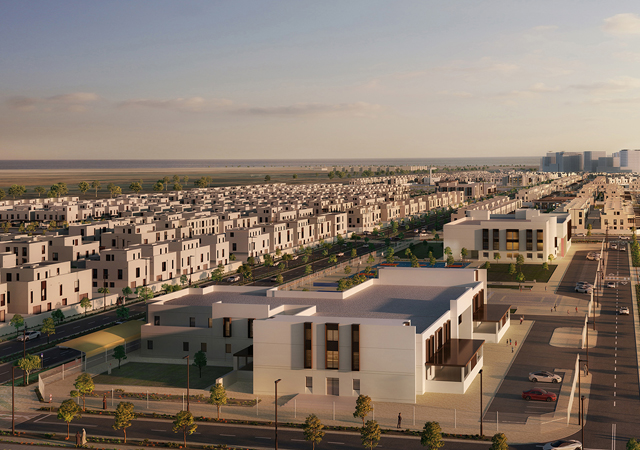

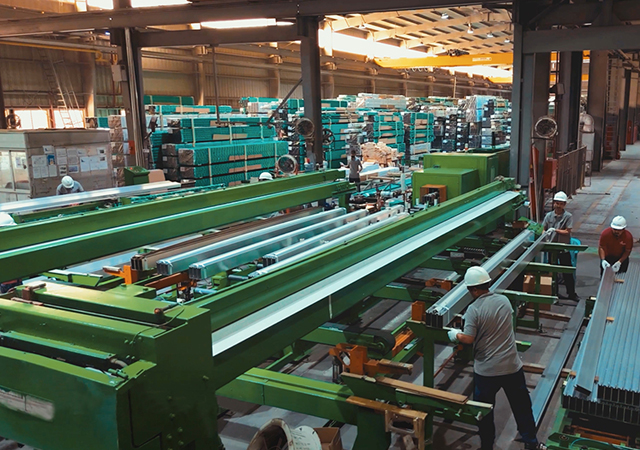



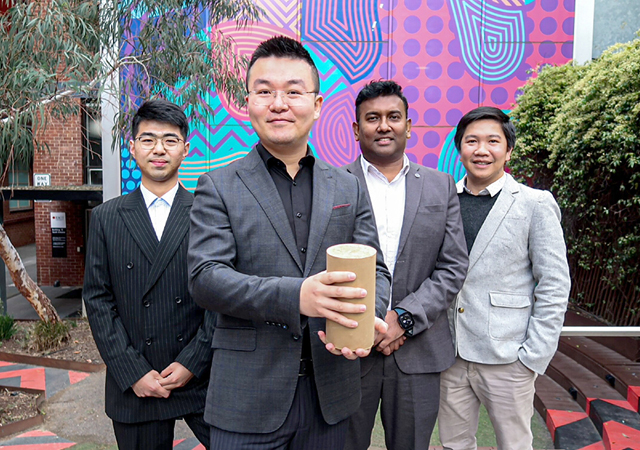



.jpg)


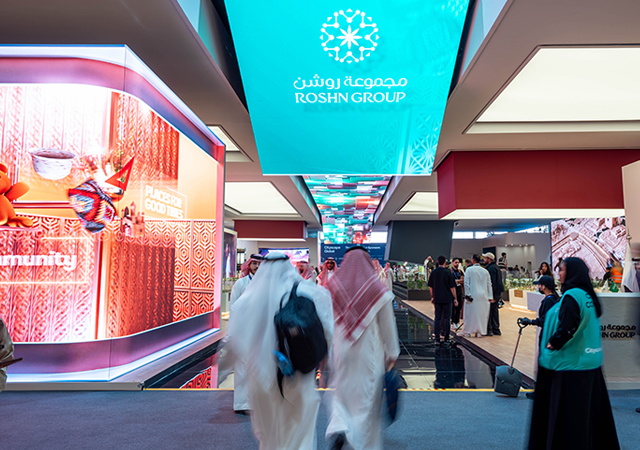








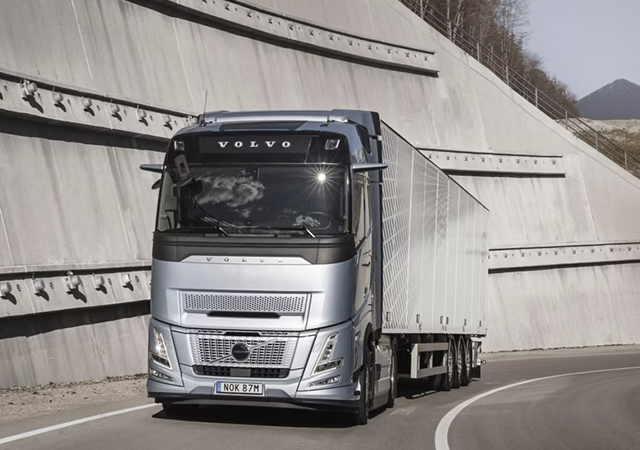

 (1).jpg)








